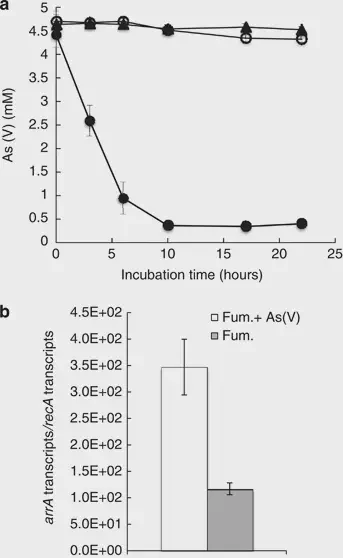Characterization and Quantification of Arsenic Respiratory and Resistant Genes during In Situ Uranium Bioremediation
 Image credit: [Lovley Lab]
Image credit: [Lovley Lab]Abstract
The possibility of arsenic release and the potential role of Geobacter in arsenic biogeochemistry during in situ uranium bioremediation was investigated because increased availability of organic matter has been associated with substantial releases of arsenic in other subsurface environments. In a field experiment conducted at the Rifle, CO study site, groundwater arsenic concentrations increased when acetate was added. The number of transcripts from arrA, which codes for the α-subunit of dissimilatory As(V) reductase, and acr3, which codes for the arsenic pump protein Acr3, were determined with quantitative reverse transcription-PCR. Most of the arrA (>60%) and acr3-1 (>90%) sequences that were recovered were most similar to Geobacter species, while the majority of acr3-2 (>50%) sequences were most closely related to Rhodoferax ferrireducens. Analysis of transcript abundance demonstrated that transcription of acr3-1 by the subsurface Geobacter community was correlated with arsenic concentrations in the groundwater. In contrast, Geobacter arrA transcript numbers lagged behind the major arsenic release and remained high even after arsenic concentrations declined. This suggested that factors other than As(V) availability regulated the transcription of arrA in situ, even though the presence of As(V) increased the transcription of arrA in cultures of Geobacter lovleyi, which was capable of As(V) reduction. These results demonstrate that subsurface Geobacter species can tightly regulate their physiological response to changes in groundwater arsenic concentrations. The transcriptomic approach developed here should be useful for the study of a diversity of other environments in which Geobacter species are considered to have an important influence on arsenic biogeochemistry.
Supplementary notes can be added here, including code and math.